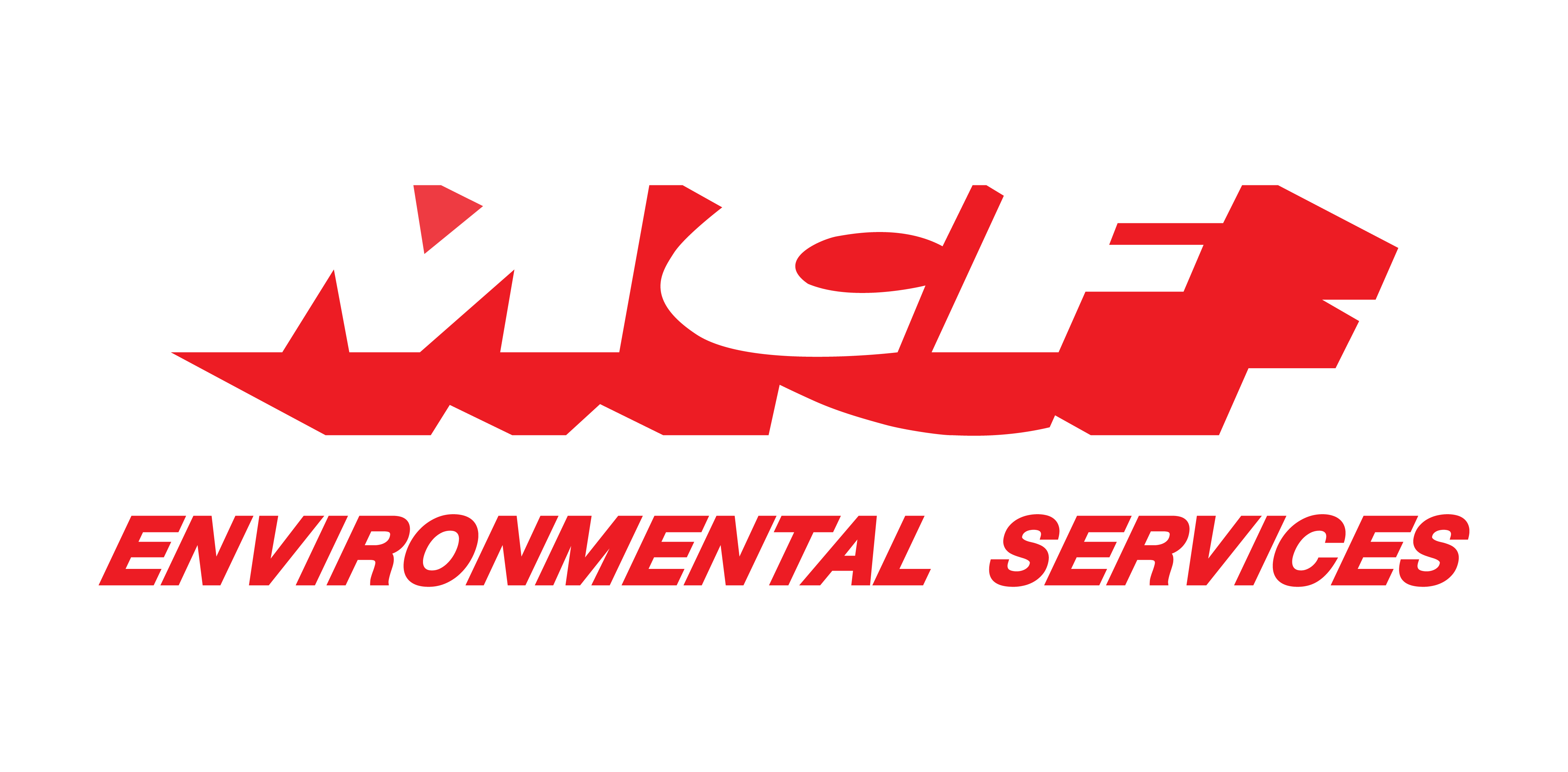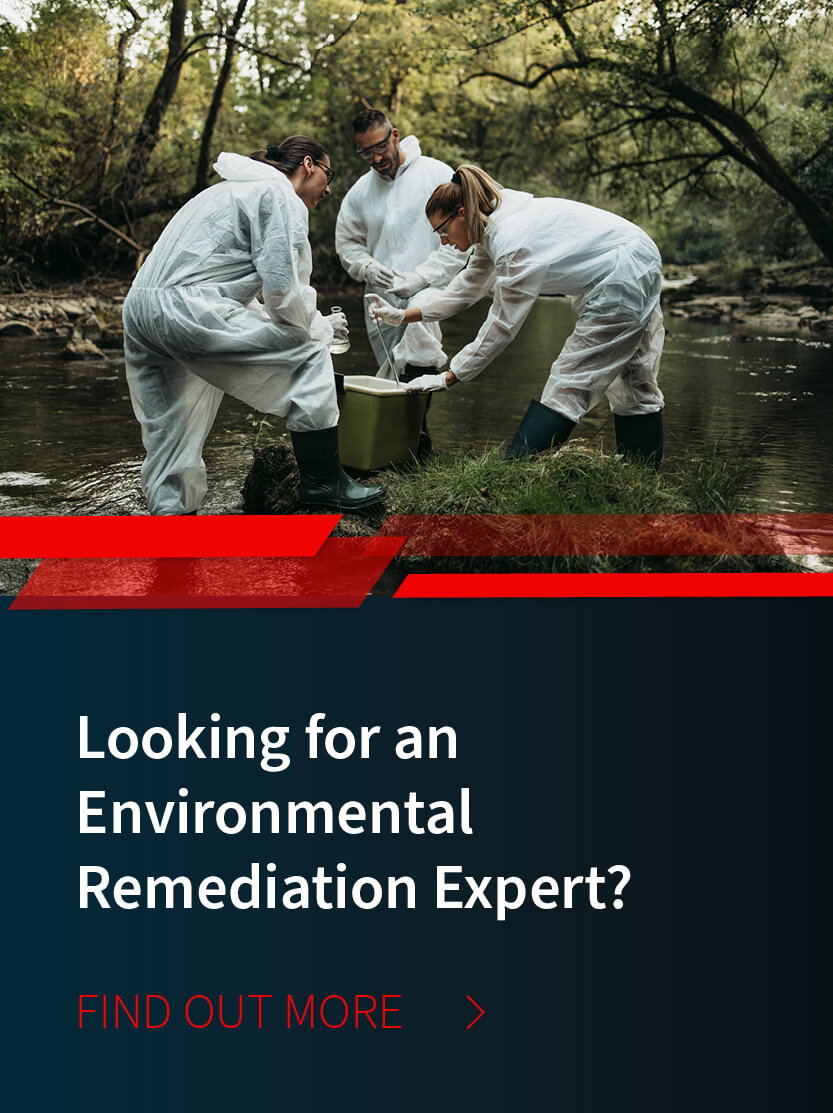
/ IN THIS BLOG
Hazardous waste regulations are rules every business that deals with hazardous materials need to follow. From large-scale manufacturers to small auto shops, countless businesses across the United States generate hazardous waste every day. While the volumes and types of waste vary, one thing remains constant: every generator is subject to the strict framework of hazardous waste regulations established under the Resource Conservation and Recovery Act (RCRA).
For environmental health and safety (EHS) managers, compliance is a core responsibility, protecting employees, communities, and the environment. Failure to comply with hazardous waste regulations can lead to steep fines, legal penalties, operational shutdowns, and long-term reputational harm, not to mention the human and environmental impact.
RCRA regulations are comprehensive, and they require businesses to manage hazardous waste from the moment it’s generated until its final treatment or disposal. This is the principle known as “cradle-to-grave” responsibility. Whether a facility produces hundreds of gallons of solvent waste each month or just a few pounds of expired chemicals, compliance still applies.
Here you can review the six key RCRA compliance steps which every generator must follow. By understanding these requirements and working with a trusted partner, your organization can reduce risk and improve safety, while ensuring that hazardous waste management stands on a strong regulatory foundation.
01 / Understanding RCRA and Hazardous Waste Regulations
The foundation of hazardous waste management in the United States is the Resource Conservation and Recovery Act (RCRA). This legislation was passed in 1976 and amended over the years. It gives the Environmental Protection Agency (EPA) the authority to oversee the generation, transportation, treatment, storage, and disposal of hazardous waste. The core purpose of the RCRA is to protect human health and the environment by ensuring waste is managed safely at every stage of its “life” cycle.
One important detail often overlooked is that RCRA sets a baseline, but states may adopt their own regulations that are more stringent. This means compliance managers must account for both federal standards, state-specific, as well as any other local requirements. Facilities operating across multiple states need to be especially vigilant to avoid gaps in compliance.
At the heart of RCRA is the definition of hazardous waste. The EPA categorizes hazardous waste in two primary ways: listed wastes (substances identified on one of four EPA lists) and characteristic wastes (materials that exhibit ignitability, corrosivity, reactivity, or toxicity). Correctly identifying these wastes is the first step in meeting regulatory obligations. Missteps in classification not only put facilities at risk of fines but also increase environmental and safety hazards.
02 / Step 1: Identifying Hazardous Waste
Compliance begins with correctly identifying what qualifies as hazardous waste. According to Title 40 of the Code of Federal Regulations (CFR) §261.3, a material can be considered hazardous in two main ways: if it appears on one of the EPA’s four RCRA lists (F, K, P, or U), or if it displays certain hazardous characteristics.
Listed wastes cover a wide range of substances. For example, F-listed wastes often come from common industrial processes like degreasing, while K-listed wastes are tied to specific industries such as petroleum refining. P- and U-listed wastes include commercial chemical products, with P-list substances classified as acutely hazardous.
Characteristic wastes are identified by their traits: ignitability (flammable materials like solvents), corrosivity (strong acids or bases), reactivity (unstable materials that may explode), and toxicity (substances harmful when ingested or absorbed).
Accurate classification is the cornerstone of safe management. Misidentification can lead to improper storage, transportation violations, and significant penalties. Many organizations rely on environmental service providers or onsite chemists to profile waste correctly, ensuring compliance from the outset and reducing the risk of downstream errors. At MCF Environmental, we often provide hazardous waste identification guidance and insight that sets a business on the right path to full compliance.
03 / Step 2: Determining Generator Status
Once hazardous waste is identified, the next step is to determine your facility’s generator status. The EPA classifies generators based on the amount of hazardous waste produced in a calendar month. This designation is critical because it dictates which regulatory requirements apply.
Very Small Quantity Generators (VSQGs), produce 100 kilograms (about 220 pounds) or less of hazardous waste per month, or no more than 1 kilogram of acutely hazardous waste.
Small Quantity Generators (SQGs) generate between 100 and 1,000 kilograms (about 220–2,200 pounds) per month.
Large Quantity Generators (LQGs) produce more than 1,000 kilograms (over 2,200 pounds) of hazardous waste or more than 1 kilogram of acutely hazardous waste monthly.
Why does this matter? Each category carries distinct rules for waste accumulation, storage time limits, reporting frequency, and emergency preparedness. For example, LQGs must submit biennial reports and maintain extensive contingency plans, while VSQGs follow more streamlined requirements.
Accurately determining generator status ensures that facilities follow the correct compliance path. Misclassification, even unintentionally, can expose an organization to costly fines and enforcement actions.
04 / Step 3: Managing Hazardous Waste Onsite
Once hazardous waste is identified and generator status is established, facilities must manage storage and handling in line with EPA standards. These onsite requirements are designed to minimize risks to employees, the public, and the environment while waste awaits transportation or treatment.
Containers must be compatible with the type of waste stored, kept in good condition, and clearly labeled with the words “Hazardous Waste,” along with the accumulation start date. Storage areas should have secondary containment, remain closed when not in use, and be inspected regularly for leaks or deterioration. Generator status determines how long waste can be accumulated: 90 days for LQGs, 180 days for SQGs, and more flexible limits for VSQGs. A VSQG may accumulate hazardous waste indefinitely, provided the total quantity on-site does not exceed 1,000 kilograms, however, it still may be in the company’s best interest to remove this waste before it reaches this limit.
Certain waste streams carry additional rules. Universal wastes such as batteries, lamps, and mercury-containing devices follow simplified handling standards. Pharmaceutical hazardous waste must comply with Subpart P of RCRA, requiring healthcare facilities and pharmacies to manage expired or controlled substances responsibly. Academic laboratories may operate under tailored regulations for laboratory chemicals and research byproducts.
Adhering to these rules helps facilities avoid violations and demonstrates a strong commitment to safe operations and environmental stewardship.
05 / Step 4: Transporting Waste Safely
When hazardous waste leaves a facility, the responsibility doesn’t diminish. In fact, transportation is one of the most heavily regulated stages of the cradle-to-grave process. The EPA and U.S. Department of Transportation (DOT) set strict rules for packaging, labeling, and moving hazardous materials to protect public safety and the environment.
Every shipment must be accompanied by a Uniform Hazardous Waste Manifest, a document that details the type, quantity, origin, and destination of the waste. This manifest creates a chain of custody, ensuring that waste is traceable at every handoff from generator to transporter to treatment or disposal facility. It also protects businesses by providing proof of proper handling and transfer.
Transporters must be licensed and maintain appropriate permits, insurance coverage, and emergency response protocols. Using unqualified or unverified carriers puts organizations at risk of spills, accidents, and severe penalties. Past cases of “midnight dumping,” where waste was abandoned illegally, led directly to today’s robust transportation regulations.
Partnering with a trusted provider, like MCF Environmental, helps ensure compliance and safety during transport. Proper documentation, vetted carriers, and thorough oversight all play a role in safeguarding people, communities, and the environment. This is why it’s so critical to align with a reliable and experienced hazardous waste provider.
06 / Step 5: Employee Training & Preparedness
Even the most carefully designed compliance program can fail without a well-trained workforce. Under RCRA, employees responsible for handling hazardous waste must receive training appropriate to their role. For Large Quantity Generators, this means a formal training program covering waste management procedures, emergency response, and regulatory requirements. Small Quantity Generators must ensure staff are thoroughly instructed in safe handling and emergency duties.
In addition, many facilities fall under HAZWOPER (Hazardous Waste Operations and Emergency Response) training requirements established by OSHA. This training equips workers to respond effectively to chemical spills, leaks, or other emergencies that could threaten health and safety.
Regular refresher courses and documented training records not only meet regulatory expectations but also reduce accidents and liability. An informed team is the strongest safeguard against compliance failures, reinforcing a culture of safety and environmental responsibility.
07 / Step 6: Cradle-to-Grave Responsibility
Perhaps the most important principle of RCRA is cradle-to-grave responsibility. This means that a generator remains legally responsible for hazardous waste from the moment it is created until its final treatment or disposal, even if it changes hands multiple times along the way.
This provision closes loopholes that once allowed waste to be mishandled or abandoned. Today, if waste is mismanaged at any point in the chain, regulators may still hold the original generator liable. That risk underscores the importance of selecting qualified partners with proper permits, insurance, and compliance track records.
Working with an experienced provider, like MCF Environmental, ensures each step, from classification and storage to transport and treatment, is fully compliant. This helps reduce liability exposure and protects your business in the long term.
08 / Build Compliance into Every Step with a Waste Partner You Can Trust
Navigating hazardous waste regulations can feel overwhelming. Although the framework is clear, there are many steps that can be a challenge, especially for an already overwhelmed business. From identifying waste and determining generator status to managing onsite storage, arranging safe transport, training employees, and honoring cradle-to-grave responsibility, tasks can quickly add up. Since each step plays a vital role in protecting people, the environment, and your business, you owe it to everyone’s well-being to seek out the appropriate help.
The cost of non-compliance - fines, penalties, reputational harm - is far greater than the investment in doing things right. By following RCRA compliance steps and maintaining rigorous oversight, organizations not only meet regulatory obligations but also demonstrate a commitment to safety and sustainability.
For nearly 30 years, MCF Environmental Services has partnered with businesses of all sizes to simplify hazardous waste compliance. Our chemists, certified drivers, and compliance experts provide full cradle-to-grave solutions, from waste profiling and manifest preparation to secure transport and treatment. When regulations are complex, MCF makes compliance manageable. Reach out to get the help you need to keep your business safe and compliant.
Robert Losurdo
President, COO








